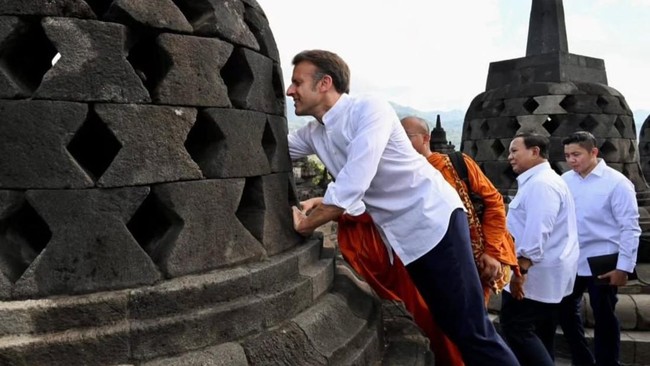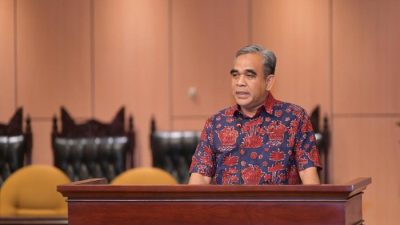
Lead
The recent visit of French President Emmanuel Macron to Borobudur Temple has sparked widespread discussion, particularly after a now-famous moment where he touched a Buddha statue at the temple’s stupa. This gesture, while seemingly innocuous, has drawn attention due to its association with myths and taboos at this sacred religious site.
Latar Belakang
The Kala Tangan Macron Menggapai Patung Buddha di Stupa Candi Borobudur has become a focal point of public discourse. Borobudur Temple, a UNESCO World Heritage Site and one of Indonesia’s most revered religious monuments, holds deep spiritual significance. The act of touching the statue, a gesture not typically encouraged at such sites, has led to debates about respect and cultural sensitivity.
Fakta Penting
According to local beliefs, touching the Buddha statues at Borobudur is considered taboo and may invoke spiritual consequences. However, temple authorities have clarified that while such practices are discouraged, they are not explicitly prohibited. Sources indicate that the stupa’s statues are designed to withstand light contact, though repeated touching could pose conservation risks.
Dampak
The incident has reignited discussions on cultural diplomacy and the importance of understanding local customs when engaging with religious sites. Critics argue that as a global leader, Macron’s actions set an example, while supporters emphasize the symbolic nature of his gesture. The Kunjungan Presiden Prancis Emmanuel Macron ke Candi Borobudur has thus become a topic of broader socio-cultural significance.
Penutup
As the world continues to watch, the Kala Tangan Macron Menggapai Patung Buddha di Stupa Candi Borobudur serves as a reminder of the delicate balance between cultural exchange and respect for tradition. Whether this moment will have lasting implications on international diplomacy or cultural practices remains to be seen, but it undeniably highlights the power of symbols in connecting—or dividing—people across the globe.











